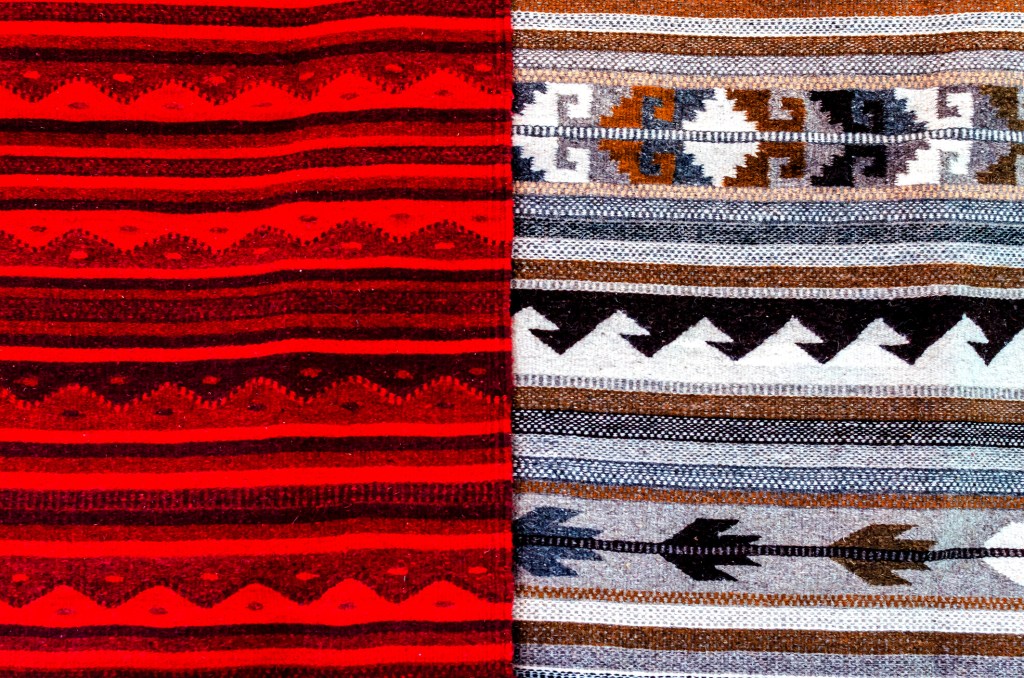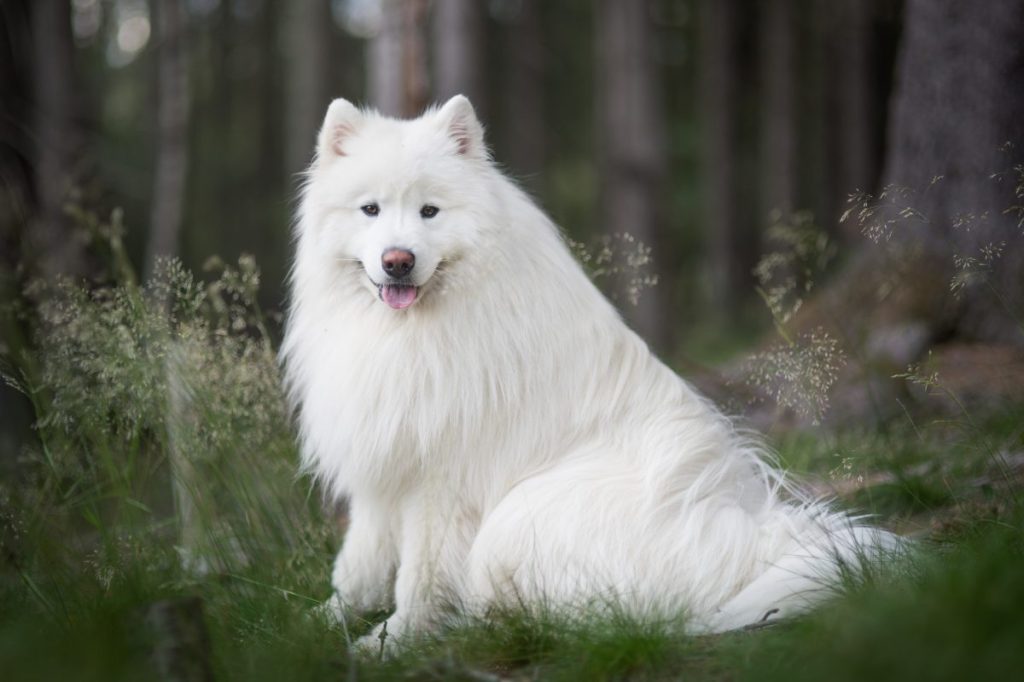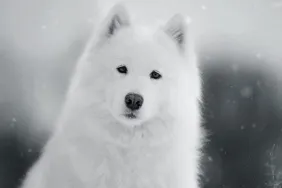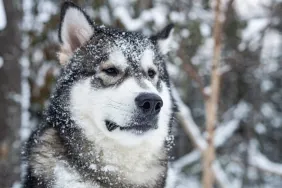The Coast Salish people of the Pacific Northwest maintained an interesting tradition for thousands of years. They regularly sheared fluffy white dogs to produce wool, which was then woven into spiritually significant blankets and ceremonial attire. These woolly dogs — similar to modern-day Samoyeds — were more than just pets.
Rather, the Coast Salish considered them as close kin, equal to humans, and regarded them as bearers of wisdom. The women mainly in charge of these dogs were deemed wealthy and held high social standing. The dogs were fed a diet of salmon and other sea life, and were guarded from mating with village dogs. However, by the late 1800s or early 1900s, the woolly dogs had become extinct.
The history of woolly dogs
It’s long been believed in non-Indigenous circles that the Coast Salish willingly abandoned their cherished woolly dogs, owing to the availability of factory-made blankets brought by American and Canadian settlers. However, the fur of a specific woolly dog — which has been part of the Smithsonian’s National Museum of Natural History’s collection since before the Civil War — is now providing insights to narrate a more truthful account.
On Dec. 14, 2023, a paper was released in the journal, Science, as a combined effort of both Smithsonian and non-Smithsonian researchers. A few members of the Salish community were also involved. By harmonizing the Native nations’ ancestral and oral accounts with sophisticated scientific approaches — including genomic analysis — the authors managed to validate the existence of the woolly dog for at least 5,000 years.
Prior to this study, animal remains found in Salish territories were suspected to be those of woolly dogs. Nonetheless, this research offers a definitive proof that these animals did indeed exist in the region for thousands of years.
Michael Pavel, an elder from the Skokomish/Twana Coast Salish community in Washington State and contributor to the study said, “We knew that.” Continuing, he shared, “We knew what we were feeding it, we knew how it was cared for, we knew that it was unique, and much of the scientific results attested to that.”
How a dog named ‘Mutton’ ignited a scientific quest into Salish traditions

The research could potentially never have taken place without a pup named Mutton. Audrey Lin — an evolutionary molecular biologist — discovered a unique breed of dog while scrolling on X (previously known as Twitter) during the COVID-19 crisis. She found an article in Hakai magazine about the traditional bond between the Salish people and the woolly dog.
Although Lin held a deep interest in the evolution of dogs, she wasn’t familiar with this particular breed. She admits to being fascinated by the account of Salish women traveling through coastal waters in their canoes, accompanied by their cherished, faithful dogs.
The article discussed the Smithsonian’s possession of what could be the only existing woolly dog pelt. This pelt belonged to a dog called Mutton, known for his fondness for chasing sheep. Mutton’s owner — a hobbyist ethnologist and naturalist named George Gibbs — sent the pelt to the institution in 1859. Gibbs — who pursued his interest in indigenous cultures while working on the Northwest boundary survey — probably got Mutton as a gift.
In the early 2000s, Mutton’s fur had been examined to ascertain if it contained woolly dog fibers in an attempt to validate certain textile collections within various museums. However, Lin was interested in delving deeper into the lineage of the woolly dog. As a result, she made a decision to produce a comprehensive genomic profile.
“I was very surprised that there hadn’t been any published genetic work on Mutton,” she said. She was particularly interested in determining if Mutton was a pre-colonial dog — one who existed in North America before the arrival of the colonizers.
Colonialism’s influence on the extinction of woolly dogs
By the early 20th century, the woolly dog species and the Coast Salish weaving practices had almost become extinct. The prevailing theory outside of Indigenous communities was that the Coast Salish people stopped breeding and shearing these dogs. This was because they got access to cheaper fibers and blankets.
However, the Coast Salish community tells a different tale. They attribute the extinction of the woolly dog to the deliberate efforts of European missionaries and authorities who sought to destroy anything linked to Native beliefs and cultural practices. They believed that garments like headbands, carrying straps, robes, and other ceremonial attire made from woolly dog fibers were endowed with spiritual qualities.
Pavel explains, “The woolly dog was gifted by the Creator to have wool fibers that would retain the energy of prayer.” A fabric woven from their fur was considered a highly cherished gift. He adds, “[It] would be one of the most sought-after and highly respected items to receive in the ancestral days.”
However, with the arrival of the British colonizers, things changed drastically for the woolly dog. Pavel points out the striking similarities between the fate of these canines and that of the Coast Salish people — both were subjected to persecution. The dogs, he says, “were either assimilated or eradicated, not unlike the policies and procedures impacting the Indigenous people.”
What the study says
The Science paper confirms the belief that as colonialism spread, many traditions of the Coast Salish — including keeping their dogs in strict reproductive isolation — were abolished. Logan Kistler, an anthropologist from the National Museum of Natural History and member of the research team, confirms this. The team found that although Mutton had genetic links to pre-colonial times, he was approximately only 85 percent woolly dog. This suggests that he had ancestors who likely bred with European dogs.
Rena Point Bolton, a community elder featured in the paper, recounted her great-grandmother being forced to relinquish her dogs. Bolton revealed to the researchers that her ancestors were forbidden to practice their cultural traditions by law enforcement. “The dogs were not allowed,” she said.
Forensic reconstruction of Mutton and the genetics of weaving

Based on data gathered from his fur, scientists performed a forensic reconstruction of Mutton. They discovered that he was larger than the skeletal remains of other canines from the archaeological record believed to be purely woolly dogs. According to Lin, Mutton was somewhat “thick looking,” with a height of 40 centimeters (15 inches) at the shoulder.
Even though Mutton wasn’t entirely a woolly dog, his DNA carried enough woolly dog traits. This made it possible for Lin and her team to understand why the dog’s fur was an ideal weaving material. The researchers found 28 genes connected to hair growth and follicle regeneration.
Additionally, they constructed a reference genome for woolly dogs. This will help identify whether other skeletal remnants discovered in the Pacific Northwest belong to this breed. The genomic data obtained from Mutton serves as an essential resource for understanding the evolution of other Pacific Northwest canine breeds.
The role of Mutton in advancing scientific knowledge and cultural understanding may become more prominent in the forthcoming years. Plans are currently underway for Mutton’s pelt to be brought back to the West Coast. This could happen in 2025 for a meeting of the Coast Salish.
Pavel notes that the woolly dog “had a gift to offer humanity.” It wasn’t just their wool but what he refers to as their “teachings” — the knowledge they passed onto humans. “They were loved, they were embraced and in return, they showed us unconditional love,” he says. “They showed us loyalty and a zeal for life.”
While woolly dogs are no longer present among the Coast Salish people, their legacy remains. They serve as a symbol of an art form being reintroduced into modern Coast Salish society, inspiring pride and strengthening the Salish cultural heritage.









